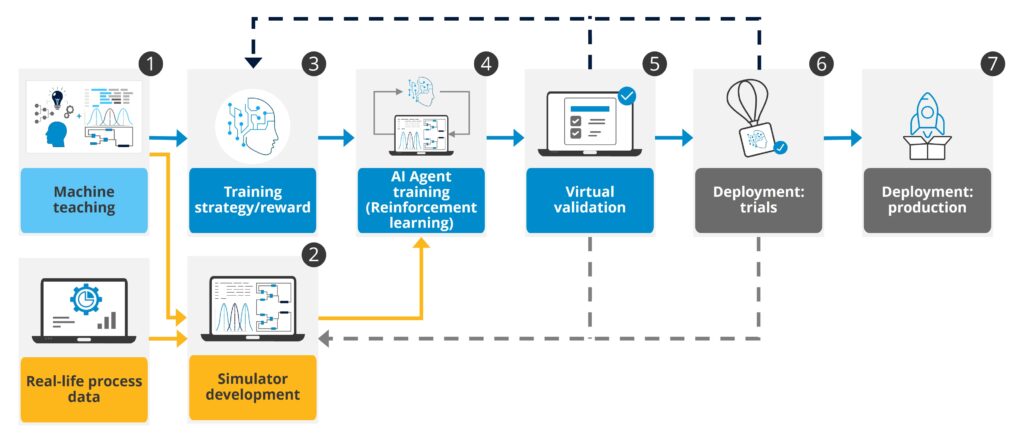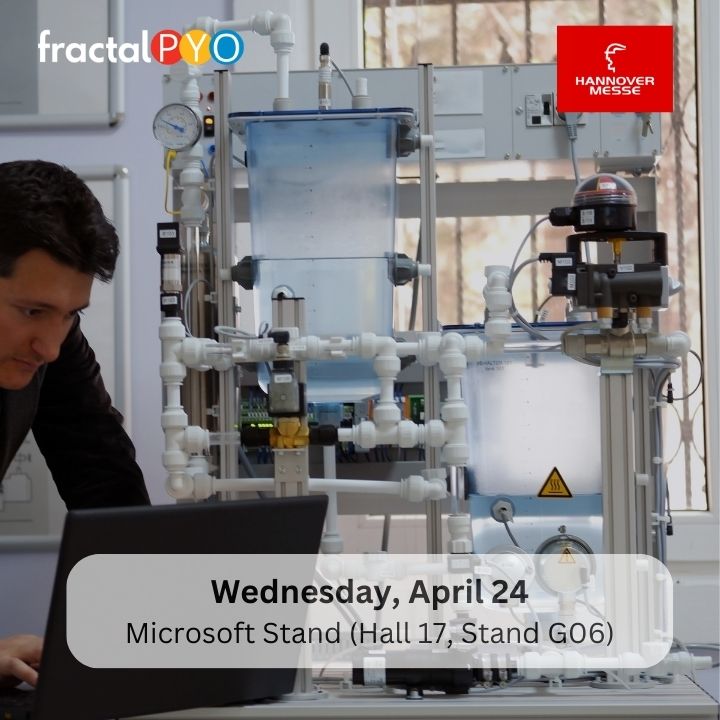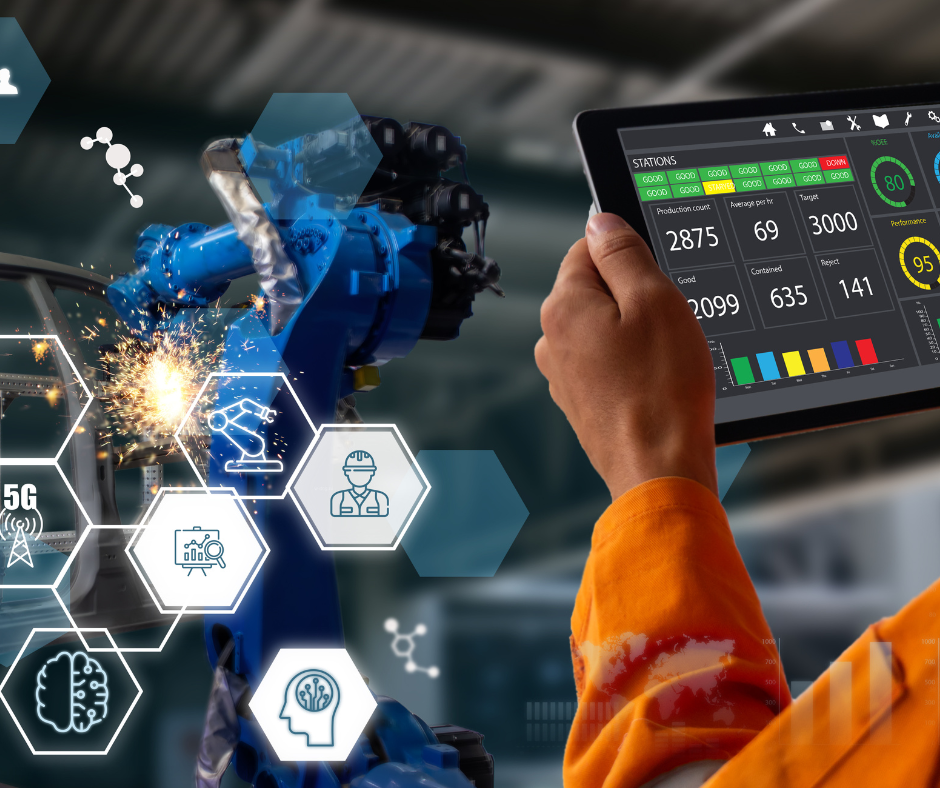Fractal is proud to announce that its Production Yield Optimization (PYO) solution will be presented Wednesday, April 24th at 10 am on Microsoft’s stand (Hall 17, Stand G06) at the 2024 Hannover Messe.
PYO is a proven Autonomous AI solution that enables manufacturers to reduce waste and optimize manufacturing output with AI agents that dynamically fine-tune existing control systems parameters.
PYO is built on Azure Machine Learning and leverages industry-standard deep reinforcement learning (DRL) techniques and libraries to translate subject matter experts’ expertise into so-called “reward functions” that allow the AI agent to self-train through a custom-built AI simulator. This expertise transfer is commonly referred to as “Machine Teaching”.
Fractal’s end-to-end DRL experience, accelerators, and best practices help manufacturers customize PYO to their unique needs. This is one of the reasons why companies such as PepsiCo have trusted Fractal for their PYO project on their Cheetos product line.
How does PYO work?
The PYO AI agent design, training, and deployment is a multi-step and iterative process.

Once the initial Machine Teaching process is completed, the manufacturing SMEs expertise will help select the appropriate process training data and define the best reinforcement learning reward function. The AI agent is then trained using the new simulation.
The trained agent is then validated virtually with the simulation. However, in most cases, multiple cycles of simulation fine-tuning, reward function adaptation, agent training, and virtual validation will be required to converge to a satisfactory PYO AI agent. The agent is then trialed and fully deployed in production.
The AI agent sends control signals to the simulation or the production system. The reward function will measure the difference between the expected simulation or system state versus its actual state and will modify the agent’s deep neural network weights accordingly. Depending on the system controlled, this training loop will run between hundreds of thousands to millions of times.
Why should you consider PYO?
- Optimize production with AI: PYO agents learn, through SME expertise transfer, to optimize production for complex and changing environments. Those agents will help with both manufacturing line-level and human-level challenges.
- Real-world AI solution: PYO uses DRL and simulations to train the AI agents without the need for pre-existing labeled datasets.
- Fractal’s end-to-end expertise: Bringing an AI agent from design to deployment requires a large set of data and AI skills. Fractal is a recognized Microsoft Solution Partner with the expertise to support you throughout your data and AI transformation journey.
If you want to learn more about PYO and how it can help you achieve your production goals, come and attend our presentation at the Microsoft booth on Wednesday, April 24th, at 10 am.
You can also check out our PYO solution page here.






